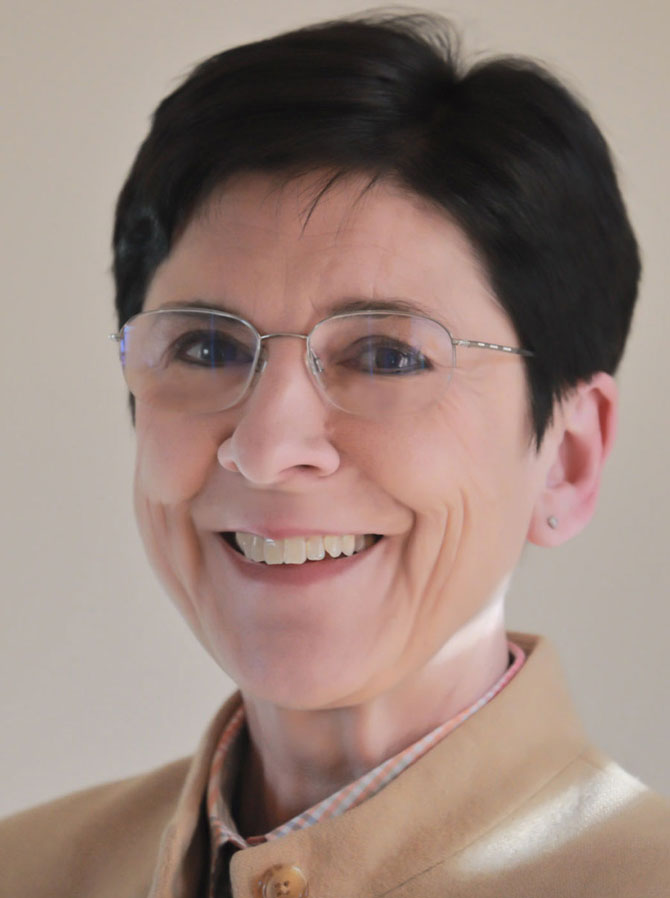
Building a language of touch: Nadine Sarter Q&A
How do we improve the communication and coordination between humans and machines?

How do we improve the communication and coordination between humans and machines?
Nadine Sarter sees touch as an effective but underutilized method of communication, and the newly-elected member of the National Academy of Engineering is working to bring touch-based interfaces to fields like aviation, the military and health care.
She is a certified pilot, director of the U-M Center for Ergonomics, a member of the National Academy of Engineering (NAE), and the Richard W. Pew Collegiate Professor of Industrial and Operations Engineering. We sat down with her recently to learn more about her work.
How did you decide to use touch as a method of communication?
We initially developed touch-based interfaces for flight decks, and it was really a process of elimination. There are more and more systems and associated displays in the cockpit and most of them are visual, so we knew we needed another way to convey information to avoid visual data overload. Audio was the obvious next choice, but there’s already auditory clutter because of alarms, alerts, notifications and communication with air traffic control. So touch was the next best option.
Was the idea of a tactile interface embraced right away?
Most people thought we were crazy when we started this work in 1997. They said “You’re kidding, right? Nobody cares about touch feedback except for gamers.” But based on a lot of experiments with coin-sized vibrating discs called tactors where we varied things like location, intensity and patterns of tactile cues, we found that we could use touch to convey a lot of information.
Now we’re working to refine tactile interfaces, and it’s a bit like inventing a new language. We’re all very trained on visual interfaces, we all know what red and yellow and green lights mean. But there are few such conventions for vibrations to the skin. It’s up to us to create them.
Your projects have such a wide breadth–aviation, space travel, military, health care. What’s the common thread?

Those projects seem very different, but they all involve the same basic problem: How do we improve the communication and coordination between humans and machines? We don’t do full automation or autonomy–our goal is always to create a human-machine team.
As the world becomes more automated, these conversations will become more important. What will be the key to improving them?
Not rushing too quickly to implement automation as the solution. It’s easy for engineers to see humans as the problem and jump to the conclusion of “let’s get them out of the loop.” The aviation field tried that in the 1980s and eventually realized it wasn’t the answer, and now other fields, like autonomous cars, are coming to the same realization. Automation isn’t 100 percent reliable, so at some point we need to have a human in the loop. And, whatever the field, we need to think very carefully about the best way to do that. Touch is one promising means of achieving this goal by keeping the human informed without adding to the visual channel.
What do you wish people knew about ergonomics research?
It’s high-tech, high-risk, high-stakes and as interdisciplinary as it gets. Working in fields like aviation and health care is exciting. When I tell people I’m an ergonomics researcher, they say “oh, you design chairs.” And I tell them that no, I’ve never in my life designed a chair.
Why did you decide to become a pilot and how does it inform your work?
You can do design and training much better if you know the domain. Once I got my pilot’s license, I learned very quickly how much more smoothly things go when you can sit in the cockpit and understand what’s happening. When you’re in the field, people ask you whether you’re a pilot and it opens a lot of doors if you can say yes.
How often do you get behind the controls of a plane?
Not as often as I’d like. When you fly, you quickly realize that it takes a ton of time, and that’s something that I just don’t have. For me, taking the weekend off is very rare. But I did run a flight simulator study recently and that was fun.
Why did you make the move from psychology to industrial operations and engineering?
After I got my master’s degree in psychology in Germany, I worked in human factors for about three years, so I was already working at the intersection of humans and machines. But it felt like I was missing one half of what I needed. My husband and I were both ready for something new, so we moved to the United States, basically with one suitcase and I decided this was the opportunity to go back to school and get that engineering degree.
How do you incorporate your psychology background into your work today?
I’m not trying to turn engineers into psychologists, but rather help engineers keep humans in mind. It’s easy for engineers to fall into the trap of thinking about humans as a problem to be solved, but I try to remind my students that machines work to serve humans and not the other way around.
Why did you choose to name your professorship after Richard Pew?
Richard Pew completed a PhD in psychology in 1963 under the guidance of Paul Fitts–one of the pioneers of human factors and ergonomics–here at the University of Michigan. He subsequently became a faculty member in psychology and then joined BBN as a research scientist. Ever since I came to the US, I met and interacted with Richard, and his thinking has been very influential on my work. He taught me to think deeply about things, to go beyond the surface and not fall for catch phrases. And he is the perfect example of someone who bridges the fields of psychology and engineering.